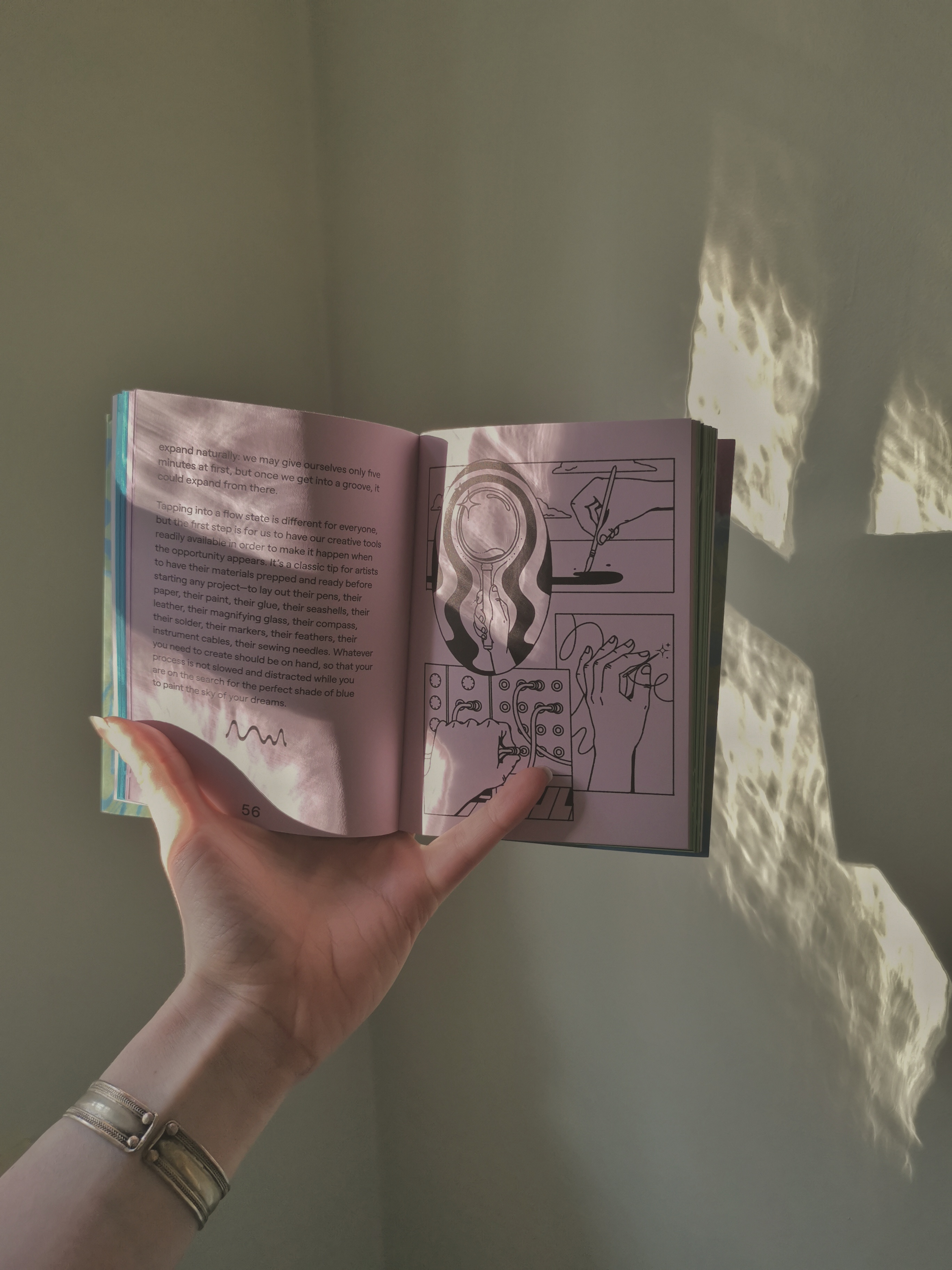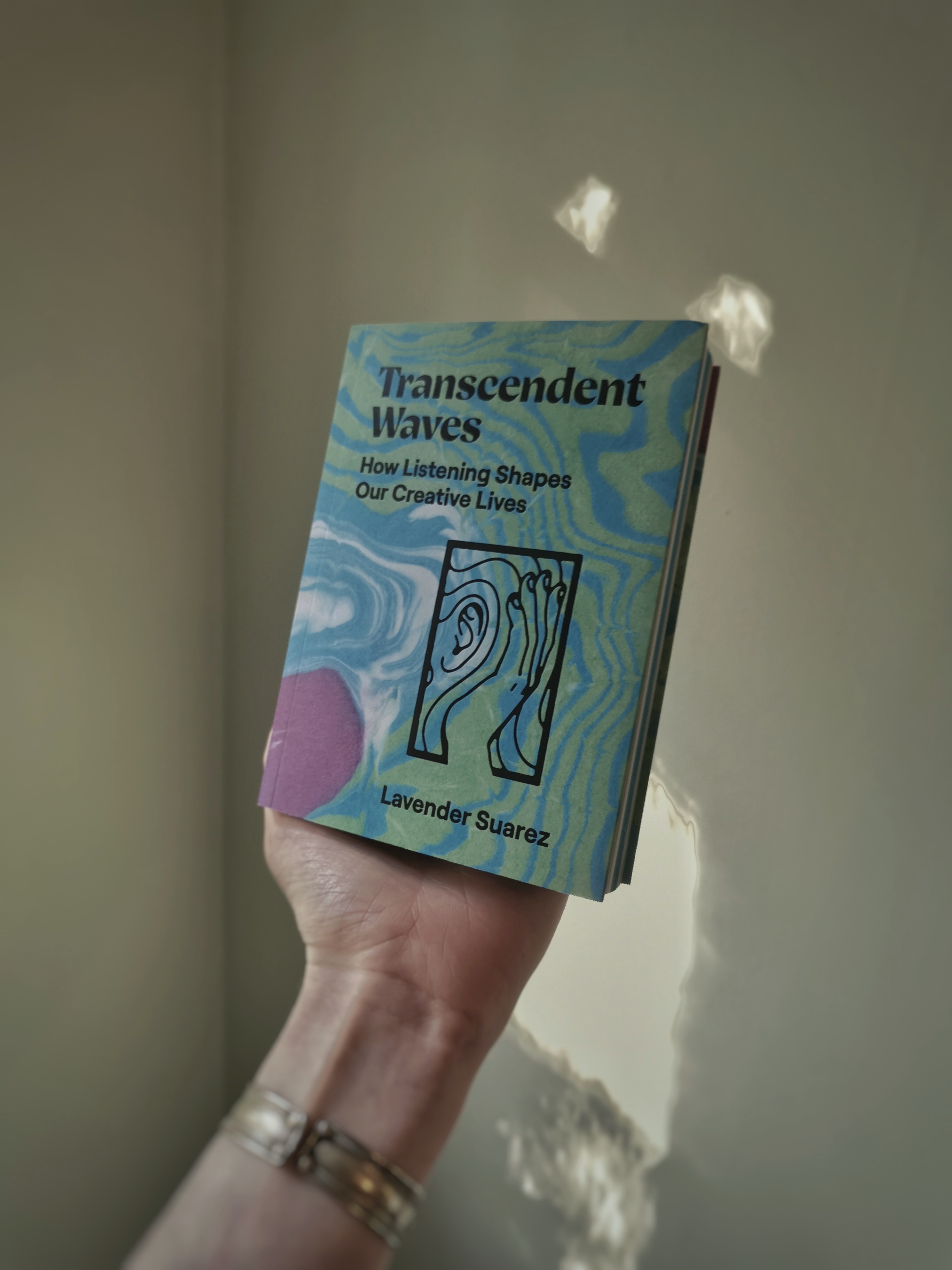
Photos by CJ Sommerfeld 
‘Transcendent Waves: How Listening Shapes Our Creative Lives’ book review
By CJ Sommerfeld, Staff Writer
In navigating these neural pathways we can heighten our creativity and halt inner criticisms.
Have you ever zoned out, like really zoned out? Then you have probably experienced alpha wave activation. It is this headspace that Lavender Suarez, author of Transcendent Waves: How Listening Shapes Our Creative Lives, encourages her readers to elicit. Suarez explains that it is these alpha brainwaves we want to harness in order to better engage with our art.
Suarez is a New York-based sound healing practitioner, electronic musician, and educator. “Many of my friends, who were touring musicians and experimental artists, struggled with mental health,” she explains as to why she first got into sound-healing. While this practice seems quite new age, it is useful to know that her credentials include a Bachelor of Science in Psychology with a concentration in creative therapy. This science background is evident in her new book as its holistic themes are all backed with empirical reasoning. So, even if you are not a new-age gargoyle, the book is still a good read.
She does not so much elaborate on mental health in her book as she does “find a flow state.” The term flow state was originally coined by psychologist Mihaly Csikszentmihalyi. Suarez nicknames this the “improviser mindset,” as she introduces the notion with the example of an individual improvising on an instrument. She notes that when we improvise, we deduce other possible realities to actualize our interests. “We get in tune with ourselves to decide how we want to manifest our visions,” as in, we are in an alpha brainwave state. Suarez explains that when an individual improvises musically, the portion of our brain associated with the inner critic (the dorsolateral prefrontal cortex) is less active, while the area of our brain that adheres to creation (the medial prefrontal cortex) takes over. In navigating these neural pathways we can heighten our creativity and halt inner criticisms.
The book continues to explain that this improvisor mindset is accessible even if not improvising on an instrument. We can achieve this fury of alpha waves by curating what Suarez calls a sonic sanctuary in our creative space. The sonic environment of each person’s flow state varies. To some, it sounds like a podcast, to others: white noise, the hum of the furnace, or a specific album. Sound is an important conductor of the improvisor mindset since listening engages our autonomic nervous system (the system responsible for stress responses) and emotions in the same ways that going into a flow state can.
Sound has heavy correlation to emotion for many reasons. One being that our episodic memory (emotional response memory) is triggered by sound. Also, between 50 to 60 percent of our bodies are water, and sound vibrations move best through water, making us ideal sound absorbers. Thus, it makes sense that the noises that surround us impact our mental and therefore creative health. “Through listening, we engage multiple brain networks associated with creativity, including the executive attention network which becomes engaged when we’re in a state of intense concentration.”
Despite the stereotype that a tortured artist breeds great art, Suarez notes that a cluttered head is not the most conducive mindset to being creative, instead a clear one is. Such can be induced by immersing oneself in the above-mentioned self-curated sonic sanctuary. There are certain mental states which are largely out of one’s own control—like those seen in singer-songwriter Daniel Johnston and poet Sylvia Plath’s work. While their mental abnormalities veered far from a clear-alpha-brainwave-rich headspace, it was assumably the gamma activity that contributed to the art they gave to the world. Creativity can sprout from multiple different seeds; some people’s mental states can be influenced by practices of their own doing such as inducing themself in a trancelike state via listening. This path to creation is what is encouraged in Transcendent Waves.
Suarez reminds us that when immersed in creative tasks and floating in an alpha state our brain releases the happy chemicals serotonin, norepinephrine, dopamine, endorphins, and anandamide. When we delve into this concentrative-creative flow, mental to-do lists, self-criticisms, politics—whatever it may be that often pulls your attention in a multitude of directions, they are now out of the picture. We can then gain insight into those ideas and thought-echoing works that we are usually unable to express with typical communication means.
Looking for a good read? These holistic and empirical explorations are wrapped up in a great blue, lavender, and seafoam pocketbook, perfect for a socially distanced day inside.


